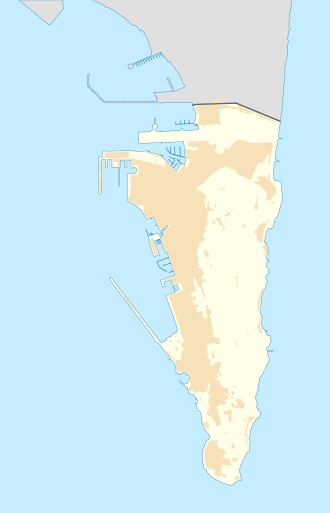| Princess Caroline's Battery | |
|---|---|
| Part of Fortifications of Gibraltar | |
| Upper Rock Nature Reserve, Gibraltar | |
 Princess Caroline's Battery at the Upper Rock Nature Reserve | |
| Site information | |
| Type | Artillery battery |
| Owner | Government of Gibraltar |
| Open to the public | Yes |
| Condition | Good |
| Location | |
Location of Princess Caroline's Battery in Gibraltar | |
| Coordinates | 36°08′41″N5°20′53″W / 36.144802°N 5.347934°W |
| Site history | |
| Built | 1732 |
| In use | Decommissioned; Houses the Military Heritage Centre |
Princess Caroline's Battery is an artillery battery in the British Overseas Territory of Gibraltar. It is located at the northern end of the Upper Rock Nature Reserve, at the junction of Willis's Road and Queen's Road. The nearby Princess Anne's Battery is often mistakenly referred to as Princess Caroline's Battery. The latter was built in 1732 and named after Princess Caroline, the daughter of King George II. Princess Caroline's Battery was updated in 1905, and a 6 inch Mark VII gun was mounted above the magazine. Later, the battery was decommissioned and the gun removed. The underground magazine is now home to the Military Heritage Centre, which includes the Memorial Chamber.





